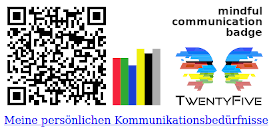Optimal size of a working team
The ideal group size depends on factors such as creative collaboration, stable relationships and the development phase of the group. Typical sizes are 5 to 7 or 5 to 9, depending on the theory.
Background
Determining the ideal size of a working group or team is not a simple task, as it heavily depends on the specific goals, the industry, and the composition of team members. Nevertheless, literature and practice suggest certain guidelines indicating that an optimal team size often lies between five and nine members. The following points offer a concise overview:
-
Efficiency and Coordination Effort
In smaller teams, communication paths are generally shorter, and coordination processes are more efficient. With each additional team member, the effort required for coordination grows exponentially. Larger groups often lose time because more individuals need to be involved in planning and decision-making processes, which can slow progress and lead to unclear responsibilities. -
Participation and Motivation
A medium-sized team fosters active involvement of all members, allowing them to contribute ideas, receive feedback, and take responsibility for a part of the project. Very small teams can risk overburdening individuals, whereas very large teams may cause some members to disengage (“social loafing”). A team large enough to include diverse competencies, but not too large, typically maintains a healthy balance between expertise sharing and individual motivation. -
Role Distribution and Specialization
Effective teamwork requires clearly defined roles that match the members’ skills. Having varied perspectives (for instance, experts from different fields) can be beneficial, yet a very small team might quickly reach its limits. At the same time, an overly large number of specialists can become inefficient to coordinate, defeating the purpose of specialized skill sets. -
Innovation and Creativity
Larger teams tend to bring more diverse perspectives and ideas, which can be particularly advantageous during the initial brainstorming phase of a project. However, smooth coordination and quick decision-making become essential in the implementation phase — something that might be hindered in very large groups. A team size of five to nine members strikes a balance, ensuring both the generation of a broad range of ideas and the ability to make decisions effectively. -
Personal Connection and Group Cohesion
Team dynamics play a crucial role in motivation and productivity. In smaller groups, trust between team members is often higher, and there is a stronger sense of identification with the shared objective. This fosters a close-knit and committed environment. Once teams become too large, social ties may weaken, and subgroups can form, diminishing overall cohesion.
Conclusion: The ideal team size arises from a balancing act: it should be large enough to encompass the necessary diversity of expertise, yet not so large that communication and coordination become unwieldy. A frequently cited rule of thumb suggests a team size of five to nine members, as this number provides a good mix of diversity, efficiency, and personal involvement. Ultimately, the optimal size depends on the specific context of the project, its objectives, and the resources and expertise available within the organization.
Team roles and composition
TwentyFive itself provides good suggestions for the ideal distribution of team roles in various analyses. MatchLytics-Management helps with the composition of teams.
Belbin, R. M. (2010): Team Roles at Work Belbin’s team role concept is a widely used approach to reflect the individual distribution of strengths and roles in teams. In particular, it shows that a team should cover a variety of roles, but should not become too large in order to maintain clarity.
 Do you always want to be addressed or written to by everyone in an understandable way and according to your communicative needs? Would you like your conversation partners to always understand you and your intentions correctly? A mindful communication badge can help you get closer to this goal. You can create it in five minutes … and it’s free.
Do you always want to be addressed or written to by everyone in an understandable way and according to your communicative needs? Would you like your conversation partners to always understand you and your intentions correctly? A mindful communication badge can help you get closer to this goal. You can create it in five minutes … and it’s free.
The Tools of sense.AI.tion GmbH provide options for using TwentyFive in everyday work. These facilitate processes of recruiting, personnel management, personnel management. In addition, the tools make communication transparent, understandable and bring you closer to customers and partners.
